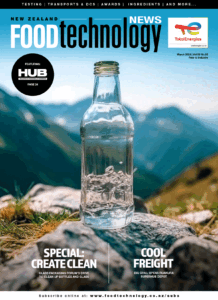By Tony Hunter, NZFT’s food futurist writer

So, why are we not using it in vast quantities already? Firstly, it needs to be extracted as soon as possible from the green matter before it degrades significantly. Secondly there’s been a lack of a reliable, cost effective and scalable process for extracting and purifying the protein. But that’s changing with many startups developing just such processes.
For instance, Dutch company Grassa have teamed up with plant-based protein company Schouten to develop alternative meat products based on grass proteins. Grassa claims that common grass can yield 2.5 times as much protein per hectare as soy.
Australian company, the Leaf Protein Co has extracted Rubisco from 18 different plants including Australian saltbush. They’ve now started initial runs at their pilot plant and are actively seeking food manufacturing clients in the wellness and better-for-you segments.
Why use it? The benefits of Rubisco as a food protein have been known for decades. It’s a complete protein with a balanced proportion of all the essential amino acids and contains high concentrations of the essential amino acids Lysine and tryptophan, which are often of critical concern in low-meat diets. It’s easily and readily digested, and digestion produces bioactive peptides which have been shown to have antihypertensive, opioid and anxiety reducing effects, antibacterial and antioxidant actions and other beneficial effects. And it’s non-allergenic.
Besides the nutritional benefits, research has shown it to have many food manufacturing advantages including, high solubility and water/fat retention, excellent emulsifying and gelling capacity with a 33% greater foaming capacity than egg proteins. On top of all, this it has no flavour.
You can expect to see grass, or maybe its proteins, on the ingredients list of your food within the next few years. Given all its benefits, that shouldn’t come as a surprise.
Tony Hunter is a global futurist, food scientist, speaker and foresight strategy consultant. He consults and speaks globally, using his distinctive combination of scientific qualifications, business experience and detailed understanding of exponential food technologies to deliver a unique perspective on the future of food.

































































































